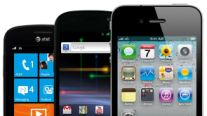
|
The Global Positioning System is a satellite-based navigation system consisting of a network of 24 orbiting satellites that are eleven thousand nautical miles in space and in six different orbital paths. The satellites are constantly moving, making two complete orbits around the Earth in just under 24 hours. The system allows users to obtain 3-dimensional positions, 24 hours a day in any kind of weather anywhere in the world. There are no subscription fees or setup charges to use GPS |

|
GPS satellites are powered by solar energy. Small rocket boosters on each satellite keep them flying in the correct path. GPS satellites transmit low power radio signals. Civilian GPS uses the frequency of 1575.42 MHz in the UHF band. The signals travel by line of sight, meaning they will pass through clouds, glass and plastic but will not go through most solid objects such as buildings and extremely dense vegetation. Each satellite has an onboard atomic clock. A GPS signal contains three different bits of information a pseudo random code, ephemeris data and almanac data. The pseudo random code is an ID code that identifies which satellite is transmitting information, ephemeris data, contains information about the status of the satellite, current date and time. This part of the signal is essential for determining a position. The almanac data tells the GPS receiver where each GPS satellite should be |

|
Athletes use GPS units to track and measure speed, distance, location, heading, altitude gain or loss and much more. A GPS unit is a receiver that locks onto the satellite signals and process the data from three or more satellites to generate location, speed and heading information. A GPS receiver must be locked on to the signal of at least three satellites to calculate a 2D position (latitude and longitude) and track movement. With four or more satellites in view, the receiver can determine the user's 3D position (latitude, longitude and altitude). When an athletes position has been determined, the GPS unit can calculate other information, such as speed, bearing, track, trip distance, distance to destination and a lot more. |
 |
There are several brands and models of GPS receivers many are small hand held units that can be held in your hand, strapped to a waistband or placed into a pocket during an athletic activity. Some GPS receivers are small and very light and can be worn like a wristwatch. Some GPS receivers are now being produced just for Athletes with features that add a new dimension to training and racing. These athlete GPS units may come with activity logging software so athletes can upload training and race data into computerized logbooks. Cell phones toady include GPS tracking hardware there are many smart phone apps are made for athletes. |
  |
There are many software products and websites that athletes can use to log and display data generated during an athletic activity using a GPS unit. If your a serious outdoor athlete or just want to track and log your outdoor athletic activities checkout a GPS unit phone app. The GPS system is free to use with no user fees of any kind. Your only cost is the cost of the GPS unit or app. Some GPS units suitable for athletes can be found for under $100 US and some very good phone apps cost very little, some are even free.. |